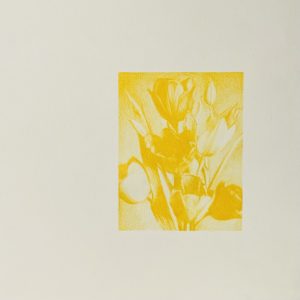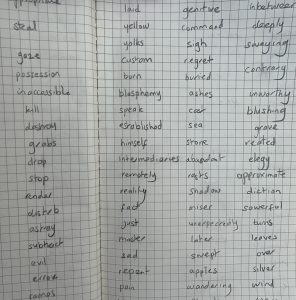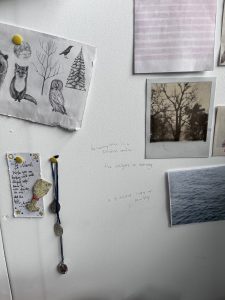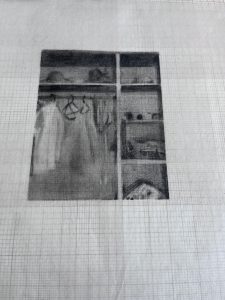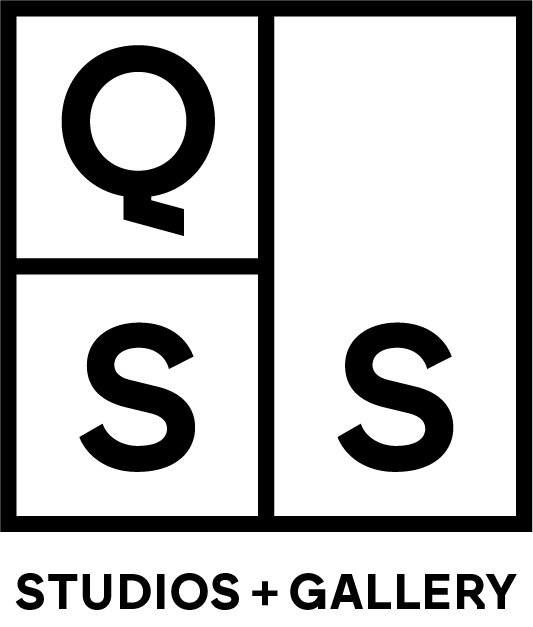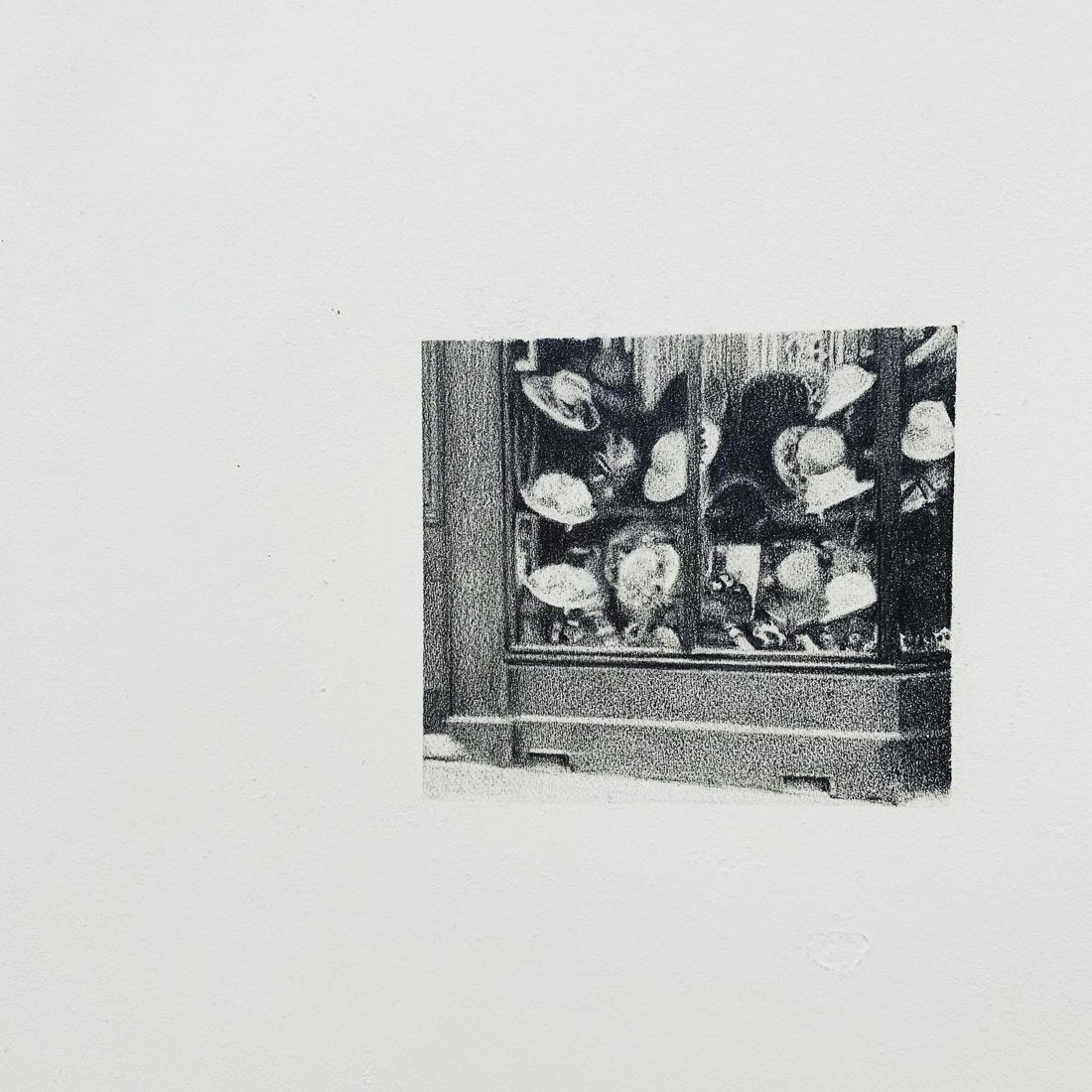What is your typical studio routine?
I come into the studio most Tuesdays as I work the other days of the week. I usually come in around 10 or 11, and eat my lunch straight away, and have a cup of coffee. Me and my studio buddy leave books out on the couch, and I will always do a bit of reading. I might call around to a friend’s studio for a chat if they are in.
I probably won’t start doing any actual work until about 1 after all the procrastinating. And usually need to leave by 4/5. Once I start doing a drawing I will focus for a few hours.
How do you describe your practice?
My practice is predominantly drawing. I would describe it as embodied practice, in which the final drawing exists as evidence of the lived experience.
Is there a particular process or methodology within your practice that is important to you?
I would say my practice is process led. Working from photographs whether found or personal, I will usually crop and edit to remove any colour. I then place the image on the page with a lot of empty space around it. I will tape up the paper for the drawing.
I think of the photograph as an object in a way, through the cropping and placement I want to make sure this is explicit to the viewer. The images may be chosen selectively or intuitively and will usually have some connection to a personal memory or emotion. This will not need to be clear to the viewer and I hope that through the embodied process of the drawing, the viewer can pick up on this.
The use of the photographic image may be interpreted as a cold medium or a method of separation, however I want the drawing to then bring emotion or life back to the image. It is a part of my practice that I struggle with knowing how much to reveal or conceal.
How long have you been working as an artist?
I graduated from Ulster University in 2019. I had a studio at Pollen studios since then which was so invaluable to my practice and. I then moved to Queens Street Studios in September 2021. I have had a few great opportunities to exhibit my work and was drawing consistently from leaving uni. I think this past year since Covid has been the most challenging time to continue my practice.
Is it difficult being back in the studio after an exhibition?
Impossible. For me it is an anti-climax and then a total questioning of everything you are doing. I think it is the imposter syndrome thing. Maybe it’s the switching from being a student and always getting feedback from an assessment, but then not having that. Although after assessment was always difficult too, as I always questioned everything then as well.
What do you dislike about the artworld?
Selling.
I find it difficult to talk about my work and sell myself. And if there are important people about this becomes impossible. I think there is this expectation to validate your practice through sale and exhibitions.
Selling is not a big priority of mine. While it would be amazing to sell, I would not like to compromise my work to do so.
It is impossible to make a living from my practice. So, I have a job and the art practice is separate. You motivate yourself to continue through your love of making which is very difficult to explain to anyone who are not artists.
What is the best advice you have been given as an artist?
Just work. I find even if you feel like you have no ideas and your work is shit, just do something. I think work comes from work and even if you have to do a load of bad work to get something good it is worth it.
What jobs have you done, other than being an artist?
I work in admin at a college four days a week. Ideally, I would like to get into a more arty or creative workplace.
About The Artist
Niamh’s practice centres around drawing, but also includes written prose, watercolours and super 8 video, which she would describe as expanded forms of drawing. Her practice reflects an interest in memory and temporality. Exploring the relationship between photography and drawing, a focus is placed on the embodied presence of gesture and materialisation through re-description of found and personal photographs.
Walter Benjamin describes Proust’s ‘memoire involuntaire’ as a moment from our past that is recalled by chance through the senses and is connected to a previous lived experience in which the past state of internal and bodily experience inhabits the present. The re-drawing of a photographic image allows the memory of the moment to re-emerge, the act of drawing brings the image close again, the intimate moment of drawing reawakens the moment of viewing. Through the consciousness in making, the intimacy, the path of thought and memory that leads from the image, the physical drawing becomes a residue of the activity.
“From the honeycombs of memory, he built a house for the swarm of his thoughts”
(Benjamin, 2015, p199)
Benjamin’s analogy of the worker bee when describing Proust’s actualization of memory is a fitting description for Niamh’s drawing practice and the implications of memory in the work. The attention to detail and rhythmic movement in the act of drawing, the busy work of the purposeful remembering, or actualization of the image lets something unconscious seep through, and the drawing exists as evidence of this lived experience.
The recording of what could be described as Proustian moments informs the selection of imagery used. Niamh uses images intuitively to create an implied narrative, in an attempt to materialise thought, bodily references or emotion. Influenced by Virginia Woolf’s phenomenological and embodied prose and conflation of nature and the human condition, landscape and natural form is dominant.
Niamh is a recent graduate of Fine Art from Ulster University. She is a co-founder and member of the collaborative drawing group The Drawing Journal.
